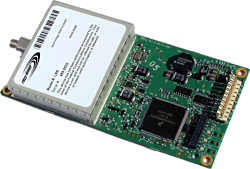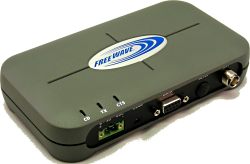We live in an increasingly connected world where many moving parts have to communicate consistently and efficiently with one another. Reports show that over the next decade, the number of embedded wireless sensors installed across the world will reach billions and maybe even trillions. Businesses have had to create smarter communication environments out of necessity due to the emerging use of mobile devices and automated machinery for command and control communication network operations. Companies that operate in industrialized settings, such as those in the public utilities and energy markets, continue to incorporate tools to automate and optimize their operational processes, increase workplace safety by monitoring system conditions, and increase productivity by doing more with less.
The integration of machine-to-machine communication tools such as sensors, process control devices, smart meters, and security cameras has increased the need for well-established, reliable communications networks. As wireless technologies continue to grow in popularity, due to their cost-effectiveness and flexibility of installation, so do the number of industrial applications served by the technology. Many companies depend on effective communications to reduce overhead costs and improve their bottom line—because it is not just about retrieving and reviewing the data gathered by these tools anymore, it is a question of how a company leverages real-time statistics to make quick and informed decisions to improve its operations. More and more, our technologies are doing the decision-making for us and it is vital to use systems that best fit our business model. Multinational companies and companies planning to take their operations overseas are examples of this need because a wireless communication system that operates in the U.S. may not meet the operating standards or protocols present in Europe or Asia.
Data and security demands at various levels of large communications networks are changing the game. Wireless options now exist that offer better manageability through network diagnostic software and network-path design servicing, expandability through the use of I/O expansion modules, reduced cost because of the lack of recurring monthly fees, and improved speed courtesy of higher throughput and decreased latencies. The radio frequency (RF) spectrum often is an ignored but critical resource for communication networks. Both licensed and unlicensed radio network systems continue to grow in popularity among energy and utility companies in the U.S. and abroad, primarily driven by the improvement in the total cost of ownership in comparison to the total cost of ownership involved in using satellite or cell phone communications.
Manufacturers of wireless data radio communications realize the mission-critical nature of managing the RF spectrum, as too many wireless devices can crowd the communication band and adversely affect its value within the network. Overcrowding or saturation of a communication band can have negative consequences for the users operating within the spectrum. Frequency-hopping spread-spectrum technology, along with increased security through measures such as AES encryption, are used to prevent link interference and to keep the wireless links from detection or intrusion by unauthorized users. In turn, the need to properly monitor, manage, and protect your company's RF communication network is important to achieve optimum reliability and performance. If your company currently uses, or is looking to implement, a licensed communication system there are many commercially available options. However, it is important to remember that licensed communications are administered and regulated by the governing bodies of the country or region within which your company operates.
For example, the Federal Communications Commission (FCC) requires that all public safety and industrial/business licensees operating within the 150–174 MHz and 421–512 MHz bands must either transfer to a 12.5 KHz technology or use a technology that achieves comparable efficiency by January 1, 2013. This process, known as narrowbanding, is intended to guarantee more effective use of the licensed spectrums and to provide greater spectrum access for public safety and non-public-safety users in general. In turn, the FCC is presenting narrowband licensed spectrums as a more attractive option for mission-critical communication applications because users can own the channel and therefore limit their exposure to interference issues.
Utility and energy companies that operate (or are someday planning to operate) in multiple countries frequently discover new communication challenges abroad. Because each country has its own distinct set of communication standards to maintain, this presents more barriers to entry for global companies that are trying to implement the same technology currently being deployed in their existing networks. For example, a North American-based energy utility that counts on reliable, long-range communications for its day-to-day operations needs to consider what communication options are available if the company expands its operations abroad. The company will need to complete a full review of the different policies, regulations, and compliance issues that pertain to communication network options that can be implemented. The European Telecommunications Standards Institute (ETSI) administers Europe's set of communication standards, which are very different from the regulations administered by the FCC in the U.S. Given the ever-changing nature of data communications technology, policy, and regulation, many wireless data communication technology providers are adapting and improving their offerings to provide a single wireless data communication system with both local and international communication certifications (for global deployment).
Companies that depend on long-range, robust machine-to-machine data communications technology now have the capability to deploy a wireless data radio system that will operate reliably and securely across the globe—on a single platform (see sidebar "A Global Data Radio" below).
The wireless technology operates in both FCC and ETSI modes and FreeWave Technologies Inc. has earned additional international communication certifications as well, making this a practical solution for energy and utility companies in nearly 30 countries across the globe, and that number is growing. A multinational company won't lose its initial investment in this technology if business markets or models change. If a company is looking to close operations in one country and expand its business in a different country, the technology is transferable to new locations because it can be switched to a different mode of communication.
Energy and utility companies looking to implement a licensed wireless data communications system now have the option to implement a single system with the capability to be multinational and cross-functional, while still being reliable. International customers in these markets want a data communications system that is reliable, cost-effective, and flexible, allowing them to deploy the communication technology in different geographies with a single device.
|
A Global Data Radio As the first global data radio of its kind, the LRS455-EU serial radio (Figures 1 and 2) operates in the licensed spectrum and eliminates barriers for multinational customers by having FCC, ETSI, and other international certifications all supported on a single platform. Already ETSI-certified in more than 28 European countries, as well as in the U.S., Canada, Mexico, New Zealand, and Australia, the LRS455-EU was also recently approved for use in the Russian Federation.
The LRS455-EU operates in the licensed UHF 435–470 MHz band for exclusive, nonshared use of the RF spectrum, significantly decreasing the probability of congestion or interference. The radio is housed in an industrial-grade, small, and rugged enclosure that offers mounting and installation flexibility. As a true serial data radio, the device provides an optimum use of the available bandwidth in narrow-band UHF channels, without the protocol overhead of native-IP radios. As a result, the LRS455-EU offers advantages over native-IP radios, such as more successful polls in the same amount of time, more endpoints that can be polled from the same master radio, and more frequent polling in general. |
ABOUT THE AUTHOR
Ashish Sharma is Chief Marketing Officer for FreeWave Technologies Inc., Boulder, CO. He can be reached at 303-381-9200, [email protected].


